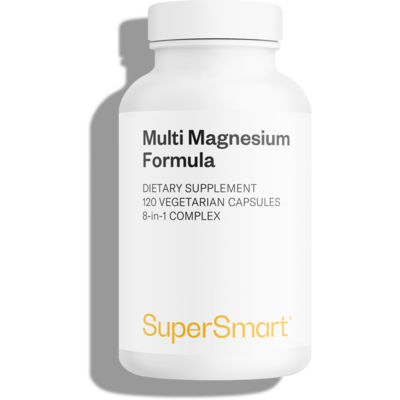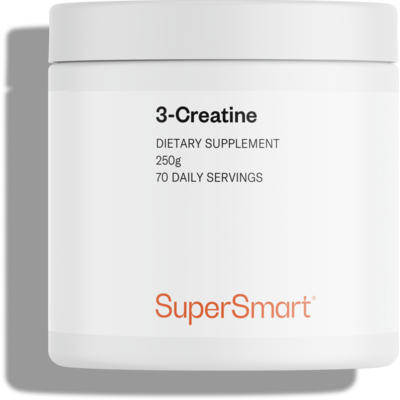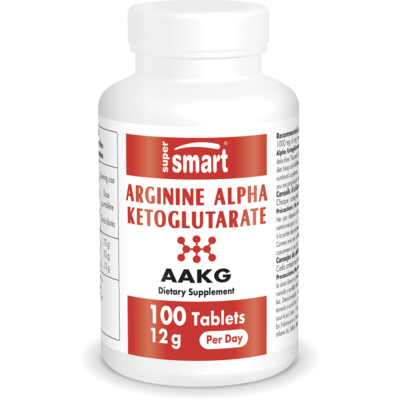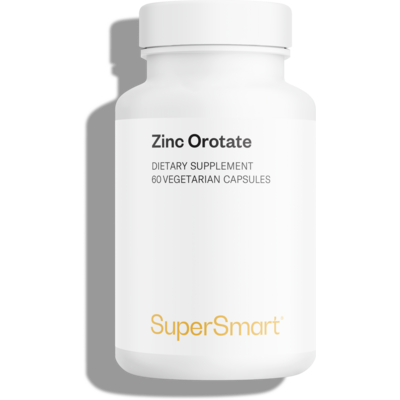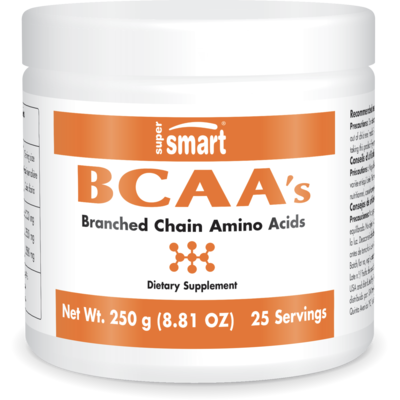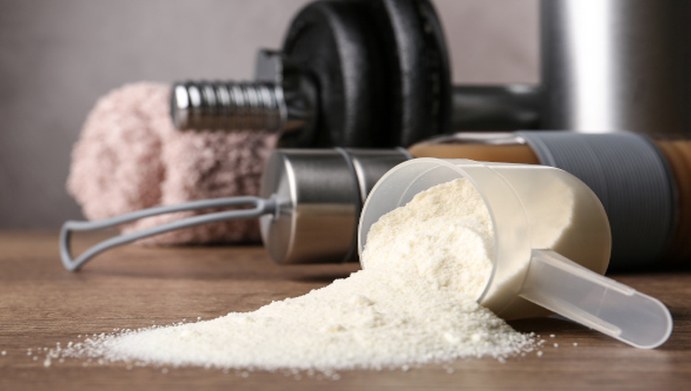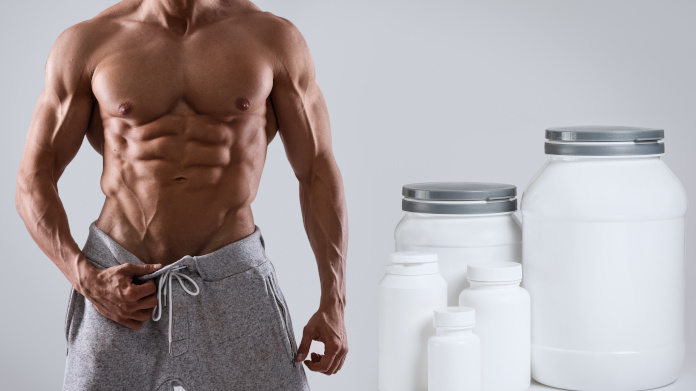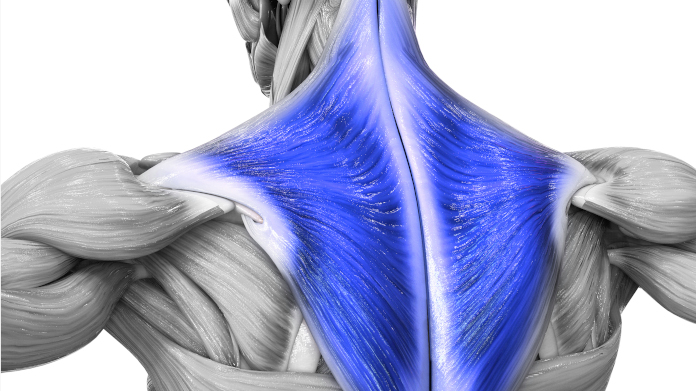Muscle hypertrophy: how can it be optimized to gain more muscle?
Want a more muscular physique? Discover the optimal training methods and foods for maximising your muscle hypertrophy – in other words, increased muscle size.

Muscle hypertrophy: mechanical overload and reconstruction
Muscle hypertrophy refers to an increase in the size of muscle fibres. The entire discipline of bodybuilding is based on this hypertrophic process in which the muscles grow bigger and stronger as a result of regular training.
More specifically, muscle hypertrophy requires muscle overload, primarily mechanical tension: the principle involves lifting heavy loads to cause micro-tears in the muscles (1-2).
After this kind of weight training, the body, and in particular the muscles, must enter an adaptation and repair phase, which is necessary for:
- the repair of muscle fibres damaged by exertion, to produce more resistant muscle fibres;
- the production of new muscle fibres, to withstand future physical exertion.
That’s how muscles get bigger and stronger, by rebuilding themselves after exertion. So the only way to produce muscle hypertrophy is to practice resistance training.
Is there an optimal number of training sessions, sets and repetitions for achieving hypertrophy?
There is no single programme for promoting hypertrophy. Just bear in mind that for muscle mass gain, the usual recommendation is to:
- train 3 to 5 times a week (for example every other day, which gives your muscles time to rebuild);
- perform between 4 and 8 exercises per session;
- do 3 to 6 sets of each exercise;
- with 8 to 12 repetitions in each set;
- and rest for perhaps 45 seconds between each set, and 2 minutes between each exercise.
Gaining muscle mass: which exercises should you choose?
For muscle mass gain, each session could, for example, include:
- 4 to 5 exercises targeted at the large muscle groups: bench press and/or press-ups for the pectorals; pull-ups, barbell rows and/or vertical pulls for the back; barbell military press, lateral to front raises for the shoulders; squats and/or leg curls for the thighs, etc. ;
- and 3 to 4 exercises targeted at the small muscle groups: classic dumbbell curls, hammer curls and/or barbell curls for the biceps; dips, close grip bench press and/or high pulley exercises for the triceps, etc.
It’s worth noting that some bodybuilders choose the full body option (working all the main muscle groups at each session, as in our example), while others do half body (for example, working the upper body one day and the lower body another day), and others still, choose to split their training into particular muscle groups (chest/triceps one day, shoulders/abs another, etc.) Each approach has its pros and cons.
Choice of weights and progressive overloading
Make sure that the level of overloading you choose allows you to perform all your repetitions - the last ones should be harder to complete.
Some sportspeople say they train to the point of muscle failure on the last set of exercises (ie, they train to the point of being unable to perform the movement), but you should maintain a careful, gradual approach in order to prevent any injuries that might impede progress (3).
When it comes to choosing weights, start off light with a few kilos (for example, dumbbells weighing 5-10 kg for men and less than 5kg for women) then up the load periodically, as you train.
This way, you’ll be maintaining the principle of progressive overload: the stronger the muscle becomes, the more it needs to be challenged to carry on building! If you want an alternative to adding more and more weight, you can also choose to increase the number of reps, sets, etc.
Muscle hypertrophy using bodyweight?
It’s possible to achieve muscle hypertrophy through bodyweight training. Street workouts, calisthenics and gymnastics are perfect examples (4).
There are several reasons for this:
- at the outset, the body’s own weight already constitutes a heavy load. An illustration of this is the inability to do a single pull-up or press-up to start with. You might even have to ‘lighten the load’, using resistance bands to help you with pull-ups, and doing press-ups from your knees;
- once you’re able to complete sets of 10-15 repetitions of pull-ups, press-ups or squats, you can aim for long sets till the point of failure, or opt for more difficult variants: press-ups with feet raised, single-leg squats (pistol squats), one-armed pull-ups, etc.
Whichever you choose, you will reach your limit at some point. But the physique you’ll have achieved if you can string together 20 pistol squats, 20 press-ups with feet raised and 20 one-armed pull-ups at a rate of 5 sets per exercise should already be very respectable!
The other 2 cornerstones of building muscle mass
That said, for muscle hypertrophy to be effective, it’s essential to combine your training with the right lifestyle, observing these two rules:
Sleep well to gain muscle
Rest, and especially sleep, are very important elements. Muscle is built and rebuilt during the night and on rest days.
Good quality sleep also ensures low levels of cortisol, a stress hormone that destroys muscle cells and reduces testosterone levels. And testosterone is crucial for promoting muscle mass and, ultimately, muscle hypertrophy (even for women: resistance training increases testosterone levels in women too).
Similarly, it’s important to manage your stress levels: make sure you factor in relaxation time, with calming practices like meditation or yoga, etc.
A diet rich in macronutrients and micronutrients
In order to function properly, your muscles also need energy provided by fats and carbohydrates, and protein to rebuild (5).
When you train, your body also loses a lot of minerals primarily through sweating (6).
In addition, intensive bodybuilding creates high stress levels for the body, which can induce an inflammatory state and lower immune defences.
It’s therefore vital that your diet satisfies the following demands:
- you need to be in calorie surplus: to increase your muscle mass, you need to take in more calories than you expend. Especially since the more muscle mass you gain, the more your basal metabolic rate will increase (but take care not to consume too much fat);
- your muscles need protein: for hypertrophy, the general recommendation is 1g-2g of protein per kilo of bodyweight a day. In other words, a man weighing 70kg should consume between 70g and 140g of protein a day (between 55g and 110g for a woman weighing 60kg). Given that 100g of chicken contains around 20g of protein, this represents up to 700g of chicken a day! An easier way of achieving this level of protein is to consume protein powder (such as Native Whey Protein Isolate which allows you to hit your protein targets via shakers or by mixing it into foods such as pancakes, oat or chia seed porridge, etc.);
- you need to consume sufficient minerals: particularly zinc, which helps maintain normal testosterone levels, and magnesium, which supports normal muscle function. Many bodybuilders choose to take supplements (such as Zinc Orotate and Multi Magnesium Formula);
- you need to eat a healthy, balanced diet in general: plenty of fresh, raw fruits and vegetables. You should limit your intake of fat, salt and sugar, avoid alcohol and smoking, and keep yourself well-hydrated. This kind of anti-inflammatory diet and lifestyle is ideal for helping you reach your muscle hypertrophy goals.
Dietary supplements for muscle hypertrophy
There are also other specific supplements aimed at those looking to build muscle, which offer support in the muscle hypertrophy process:
- BCAAs: BCAAs are amino acids which are involved in producing the protein necessary for muscle gain (one such product is BCAAs) (7);
- creatine: rather than promoting muscle gain directly, this amino acid derivative encourages the recycling of ATP, a major source of cellular energy, which makes it possible to complete more intensive resistance-training sessions. In addition, creatine promotes a certain degree of water retention, which gives muscles a fuller, more voluminous look, though at the expense of definition (try, for example, 3-Creatine) (8);
- arginine: arginine is a vasodilator which promotes blood flow to the muscles. During and after exertion, the muscles are more ‘swollen’, ‘venous’ and ‘full’. Stimulating vascularisation of the muscles during and after exercise improves the flow of oxygen (for exertion) and nutrients (for muscle anabolism) (see Arginine Alpha Ketoglutarate, a particularly effective form of arginine) (9);
- citrulline: citrulline is a precursor of arginine, with greater bioavailability and the same effects (see L-Citrulline);
- testosterone-boosters: as testosterone is key to achieving muscle mass gain and hypertrophy, many bodybuilders also use supplements designed to increase testosterone levels (such as Natural TestoFormula, a combination of various natural testosterone stimulants) (10).
SuperSmart ADVICE
References
- SCHOENFELD, Brad J. The mechanisms of muscle hypertrophy and their application to resistance training. The Journal of Strength & Conditioning Research, 2010, vol. 24, no 10, p. 2857-2872.
- SCHOENFELD, Brad J. Potential mechanisms for a role of metabolic stress in hypertrophic adaptations to resistance training. Sports medicine, 2013, vol. 43, p. 179-194.
- O'SHEA, Patrick. Effects of selected weight training programs on the development of strength and muscle hypertrophy. Research Quarterly. American Association for Health, Physical Education and Recreation, 1966, vol. 37, no 1, p. 95-102.
- IVERSEN, Vegard M., NORUM, Martin, SCHOENFELD, Brad J., et al.No time to lift? Designing time-efficient training programs for strength and hypertrophy: a narrative review. Sports Medicine, 2021, vol. 51, no 10, p. 2079-2095.
- PHILLIPS, Stuart M. The science of muscle hypertrophy: making dietary protein count. Proceedings of the nutrition society, 2011, vol. 70, no 1, p. 100-103.
- WALSH, Michael, CULLETON, Bruce, TONELLI, Marcello, et al.A systematic review of the effect of nocturnal hemodialysis on blood pressure, left ventricular hypertrophy, anemia, mineral metabolism, and health-related quality of life. Kidney international, 2005, vol. 67, no 4, p. 1500-1508.
- PLOTKIN, Daniel L., DELCASTILLO, Kenneth, VAN EVERY, Derrick W., et al.Isolated leucine and branched-chain amino acid supplementation for enhancing muscular strength and hypertrophy: A narrative review. International journal of sport nutrition and exercise metabolism, 2021, vol. 31, no 3, p. 292-301.
- CRIBB, Paul J., WILLIAMS, Andrew D., STATHIS, Christos, et al.Effects of whey isolate, creatine and resistance training on muscle hypertrophy. Medicine & Science in Sports & Exercise, 2007, vol. 39, no 2, p. 298-307.
- COOK, Gary. The Effects of Chronic Arginine Supplementation on Muscle Strength and Hypertrophy Following Resistance Training. Thèse de doctorat. Ohio Dominican University.
- SINHA-HIKIM, Indrani, ARTAZA, Jorge, WOODHOUSE, Linda, et al.Testosterone-induced increase in muscle size in healthy young men is associated with muscle fiber hypertrophy. American Journal of Physiology-Endocrinology and Metabolism, 2002.
Keywords
12 Days
A Product worth waiting for when not…
A Product worth waiting for when not available and then arriving as a surprise!
DOMINIC
14 Days
On time shipping
On time shipping
GEORGE Verne
15 Days
Ordering was easy and the product was…
Ordering was easy and the product was delivered with no problems. Appreciated that I was notified when it would arrive. Thanks!
MascarC
21 Days
Great customer service - responsive …
I ordered from them and my item was unavailable for sometime. I was super happy when they reactivated my order and shipped my item which arrived very quickly. Great customer service.
Ruth Rueter
22 Days
Super fast shipping
Super fast shipping
Donald Borling
25 Days
Reputable companysearch and the number of…
The research and the number of selection of products.
NAKHJAVAN Shervin
38 Days
The Anti Aromatase is a great product
The Anti Aromatase is a great product. You just need to have constant inventory. Recently this product has been out of stock.
GEORGE Verne
40 Days
Great help on chat
Great help on chat. Knowledgeable and friendly.
Jason Argos
43 Days
Customer service was fast and friendly.
Customer service helped to stop the transaction process of the subscription. I appreciated that.
Greenie
43 Days
I order here due to the high quality of…
I order here due to the high quality of the products and the quick delivery of items - thank you
Barbara J
45 Days
SuperSmart's Eye Pressure supplements: highly recommended!
I purchase SuperSmart's Eye Pressure supplements regularly for over 5 years, and gotta say they are truly a wonderful product for my Glaucoma. Highly recommended if you have eye pain from your Glaucoma.
D. Martinez
49 Days
Quick service
Quick service
MONELL
50 Days
Speedy service.
Speedy service.
ROSENTHAL Marvin
54 Days
Clear website- Efficient
Clear website. Excellent search engine and fast delivery!
Mohamad Hussein
56 Days
They have great products.
They have great products.
Vickie

